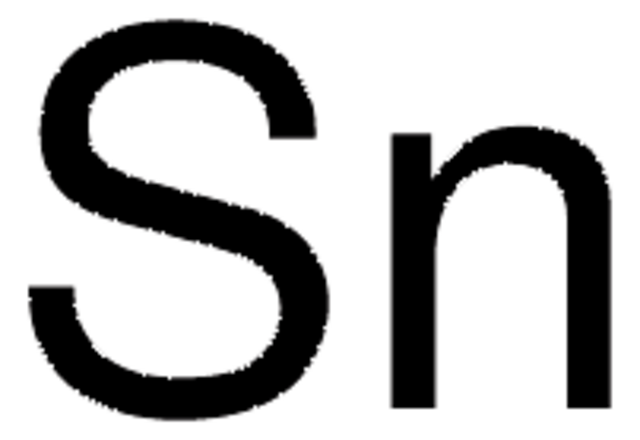267953
Iron
powder, <10 μm, ≥99.9% trace metals basis
Synonym(s):
Fe
About This Item
Recommended Products
Quality Level
assay
≥99.9% trace metals basis
form
powder
reaction suitability
core: iron
reagent type: catalyst
resistivity
9.71 μΩ-cm
particle size
<10 μm
bp
2750 °C (lit.)
mp
1535 °C (lit.)
density
7.86 g/mL at 25 °C (lit.)
SMILES string
[Fe]
InChI
1S/Fe
InChI key
XEEYBQQBJWHFJM-UHFFFAOYSA-N
Related Categories
Application
- Reduction of nitroaromatic compounds to aromatic amines.
- Iron-mediated polymerization of methyl methacrylate (MMA) in the presence of a reversible addition-fragmentation chain transfer (RAFT) agent, 2-cyanoprop-2-yl 1-dithionaphthalate (CPDN).
- Synthesis of pyrrolo[1,2-a]quinoxaline derivatives.
- Conversion of ketoximes to the corresponding ketones by treatment with iron powder.
- Iron-catalyzed cross-coupling reaction of imidazoles with vinyl bromides and vinyl chlorides.
signalword
Warning
hcodes
Hazard Classifications
Flam. Sol. 2 - Self-heat. 2
Storage Class
4.2 - Pyrophoric and self-heating hazardous materials
wgk_germany
nwg
flash_point_f
69.8 °F
flash_point_c
21 °C
ppe
Eyeshields, Gloves, type P3 (EN 143) respirator cartridges
Certificates of Analysis (COA)
Search for Certificates of Analysis (COA) by entering the products Lot/Batch Number. Lot and Batch Numbers can be found on a product’s label following the words ‘Lot’ or ‘Batch’.
Already Own This Product?
Find documentation for the products that you have recently purchased in the Document Library.
Customers Also Viewed
Articles
An article concerning self-propagating reactions induced by mechanical alloying, presented by Sigma-Aldrich.com.
In recent years, the price of tellurium, a key component in the bestperforming thermoelectric materials, has increased significantly, leading to the question, “Is it economically viable to produce thermoelectric generators on an industrial scale?
The price of tellurium, a key component in many thermoelectric materials, has risen in recent years, leading to the search for more cost-effective substitutes. This article presents silicide materials as a cheaper potential alternative.
Our team of scientists has experience in all areas of research including Life Science, Material Science, Chemical Synthesis, Chromatography, Analytical and many others.
Contact Technical Service



